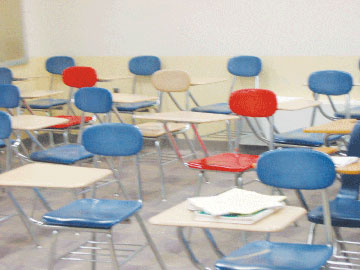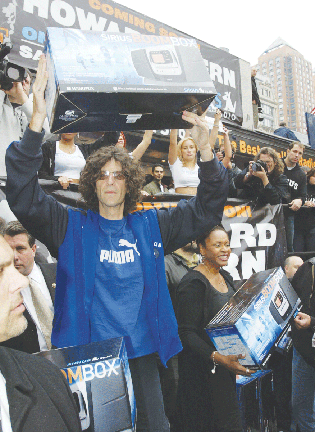Department of Athletics In the Hole $173K
December 10, 2004
The UMass Boston Department of Athletics, despite its increasing revenue, lost $82,600 of surplus at the beginning of Fall 2002 to plunge into the red by $173,300 within two years.
The repeatedly raised Athletics and Recreation Fee mainly contributed to the 17.7 percent hike of total revenues of the department, from roughly $1,943,000 to $2,287,000. However, a state-enforced salary cut for two full-time workers in the department forced a loss of $165,000 in the Fiscal Year of 2004 (FY04) which officially ended on July 1 of this year.
The Mass Media obtained the 15-page document on the department’s financial performance during the last two years from the Budget Office, two months after the student paper’s request for the document due to various lengths of red tape.
The revenue increase came mostly from the rising amount of the Athletic and Recreation Fee levied on UMB students. Whether they know it or not, the students here have been effected by a fee increase made after Spring 2003, that is, $7.38 per credit from $6.29 in each semester, $48 for a summer session, up from $38, and $145 during students’ first semester enrolled at UMB from $100 a year ago. As a result, the students now shoulder 91.7 percent of the total revenues of the department.
Full-timers are the biggest victims. According to the department, students with 12 or more credits, are charged $88.50, which has been raised three times in five years, or by a total of $30.50. Asked if there will be another increase after the present rate expires in the FY05, Pat Burns, Interim Director of Athletics & Recreation, answered, “fee increase is always a possibility every year, though I’ve not prepared for the FY06 yet.”
There is another side of a coin in this issue. According to Burns, a projection of upcoming total revenues every year became much more uncertain and difficult to set a budget plan for next years, after the University Administration at the end of the FY02 changed the way they collect the Athletic and Recreation Fee from per-capita system to per-credit system. Until Fall 2002, the fee had been charged simply according to whether students were full-time ($63) or not ($39). But now, the amount is based on numbers of credits students take, which cannot be determined until the Add-Drop period ends.
Burns is also concerned about the number of part-time students, “I think [the per-credit system] will be negative as a whole. The number of students might exceed on campus than it was projected. But if they don’t take many classes, or many credit-hours, it still makes a negative impact on us,” repeatedly said Burns. “With the fee remaining the same and the enrollment increasing, only if the more [with higher credits] come in, it might become our advantage.”
As for the bulging expenses, Burns attributed them to a long-term state policy to cut spending on the department. According to Burns, at one time, as many as 10 or 12 full-time positions were completely paid for by the Commonwealth of Massachusetts. However, as the state government gradually keeps shedding its burden, now the department has to pay for its 23 full-time workers. With two more full-time workers to pay for, combined with the salary increases of contracted workers in the Professional Staff Union, represent 77.7 percent of the spending increase in FY04.
Burns said the state not only ordered the department to pay for the two positions in the future but also retroactively for a semester before. This caused an unexpected loss for the department, since the department had already finished several renovations in its facilities and set the next year’s budget, according to Burns. “If we had that money being applied toward salaries, benefits and payroll expenses, then, we wouldn’t have ‘the fee dilemma,’ or every year if we will have to raise the fee or not. Money would be there,” said Burns.
Among the total expenditures in the FY04, about $1,665,000 (67.9 percent) goes to human-related causes, such as salaries for various workers and coaches, health benefits and overtime pay. Other factors include indirect expenses (7.8 percent), team travels (6.3 percent), and the Facility Operational Expenses (4.2 percent)
Amounts of income for specific persons were not immediately available.
“We are scrutinized [by the university due to the deficit]. But I think they see the majority of our expenses are involving payrolls, for such as professional staff, classified staff, part-time coaches and so on,” said Burns. “The athletic department is, for the most part, self-sufficient. We operate various outdoor and indoor facilities. We manage seven-day-a-week operation. That’s what people have to understand. The athletic department manage not only the fourteen varsity teams but also recreation programs which need to work with communities on and off campus, fitness center and many other things. So, it’s much more than only sports teams.”
Being shackled into a high cost for human resources, which makes it difficult for to reduce the deficit immediately, the department is looking for other sources from which to raise money.
Following the Athletic Fee is the Ice Hockey Rink rental (4 percent), about $95,200. The UMB Annual Golf Classic in June generates supplemental revenue from the alumnus, or $110 individual and the $400 foursome price. The Beacon Club collects donations ranging from $25 (Beacon Backer), $50 (Varsity Circle) to $100 (Blue & White Circle membership).
But the department isn’t out of the red yet. It failed to raise funds at the Hall of Fame Banquet at the ballroom of the Campus Center on October 23, mainly because of a lack of sponsors.






















































